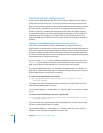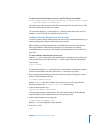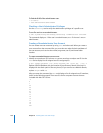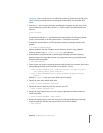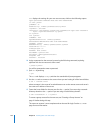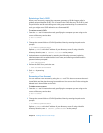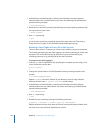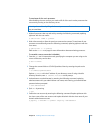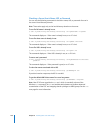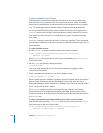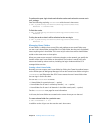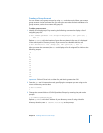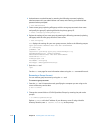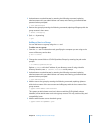
106 Chapter 8 Working with Users and Groups
Checking a Server User’s Name, UID, or Password
You can use the following commands to check the name, UID, or password of a user in
the server’s local directory domain.
Note: These tasks apply only to the local directory domain on the server.
To see if a full name is already in use:
$ sudo /System/Library/ServerSetup/serversetup -verifyRealName "
longname
"
The command displays a 1 if the name is already in use, or a 0 if it isn’t.
To see if a short name is already in use:
$ sudo /System/Library/ServerSetup/serversetup -verifyName
shortname
The command displays a 1 if the name is already in use, or a 0 if it isn’t.
To see if a UID is already in use:
$ sudo /System/Library/ServerSetup/serversetup -verifyUID
uid
The command displays a 1 if the UID is already in use, or a 0 if it isn’t.
To test a user’s password:
$ sudo /System/Library/ServerSetup/serversetup -verifyNamePassword
shortname
password
The command displays a 1 if the password is good, or a 0 if it isn’t.
To view the names associated with a UID:
$ sudo /System/Library/ServerSetup/serversetup -getNamesByID
uid
If you don’t receive a response, the UID is not valid.
To get the default UNIX short name for a user long name:
$ sudo /System/Library/ServerSetup/serversetup -getUNIXName "
longname
"
Note: Mac OS X Server provides the net tool, which is essentially a clone of the
Windows net command. The net tool enables administrators to perform advanced
customization of the PDC and mapping domain privileges to UNIX groups. See the net
man page for more information.



